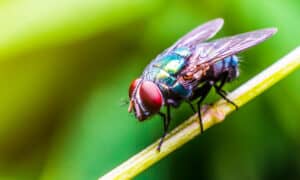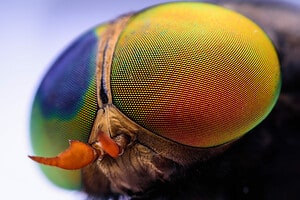Flies are without a doubt some of the most annoying pests known to humanity. They buzz around your face persistently, land on your food, and leave a disgusting mess if you swat them. How many things have you broken in your house waving around the nearest thing you can find, trying to kill that one aggravating, giant fly that keeps buzzing around your lamps, mirrors, and windows? As it turns out, flies are good for some things, but we’re not even going to begin to try to convince you to let them roam your house. Instead, we’re going to share some proven methods to keep flies away and how to kill them if your best prevention efforts fail. Get your swatter ready and let’s go!
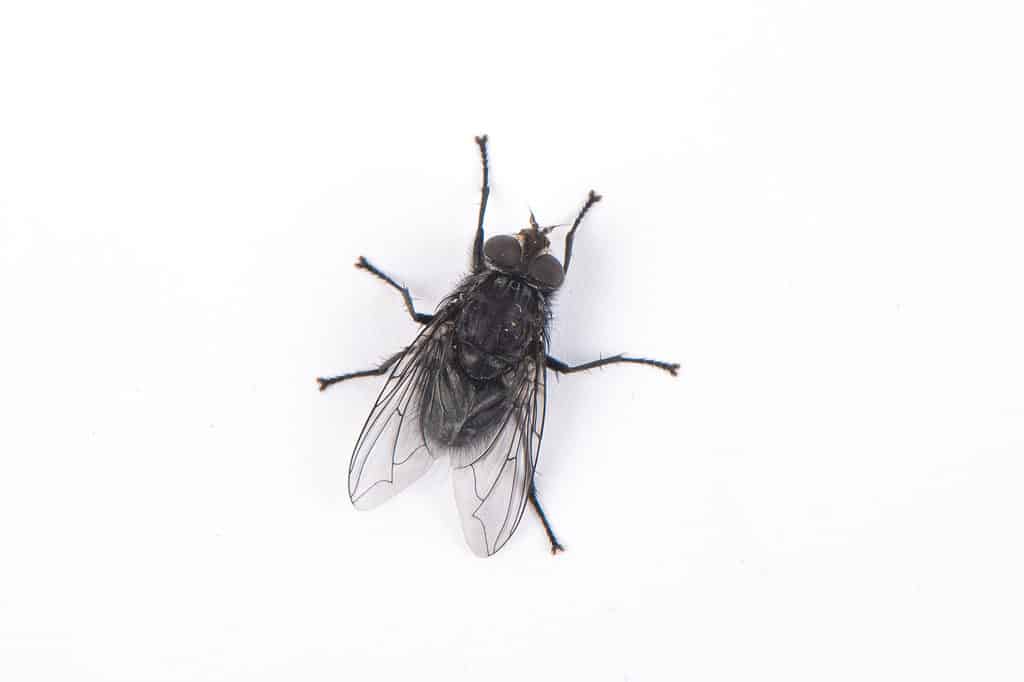
Look familiar? Flies are annoying, dangerous (and a little bit useful), but what are the best ways to prevent them?
©iStock.com/zhikun sun
Types of Flies You May See Around the House
There are more than 110,000 species of flies in the world, but fortunately, you are most likely to encounter just a few common species in and around your house. Here’s a list:
- Houseflies – grey flies about 1/4 in. long, these guys hang around garbage, animal feces, and food.
- Fruit flies – reddish-brown flies about 1/8 in. long. They flitter around overripe fruits and vegetables, and they multiply very fast.
- Drain flies – dark flies about the same size as fruit flies. They like damp rotting organic matter. They may be telling you that you have a plumbing issue.
- Cluster flies – big flies about 3/8 in long that come out in fall and winter to warm themselves in sunny places, like windowsills.
- Blow flies – metallic green or blue flies 1/2 in long that particularly like to hang around dead animals, laying eggs that hatch into maggots.
- Stable flies – similar in appearance to houseflies, these creatures bite people and animals. They’re often found on farms.
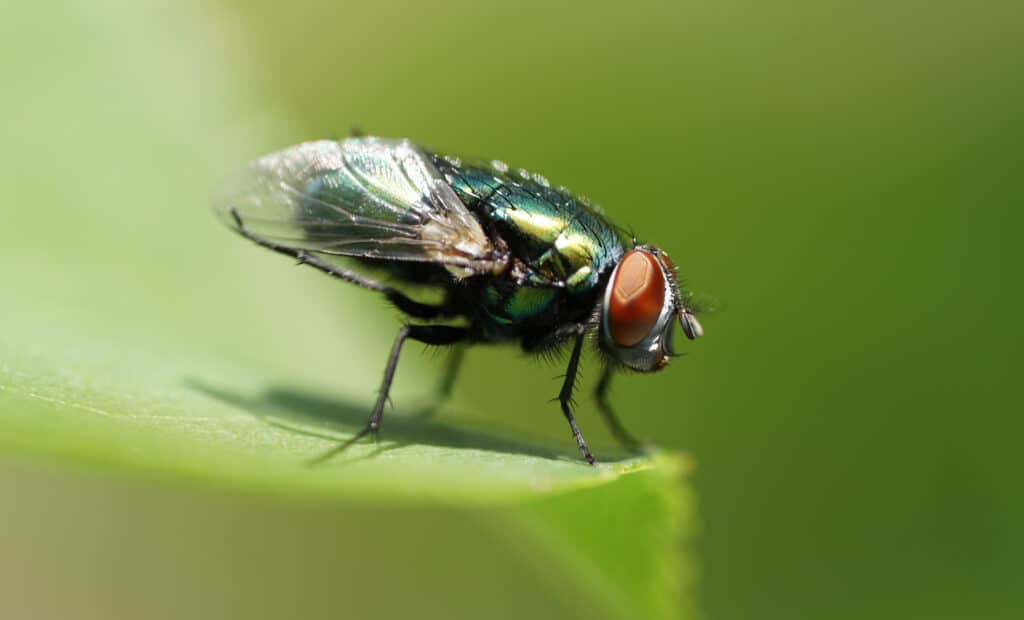
Blowflies like this one are colored in iridescent shades of metallic green and blue.
©Moni.ka/Shutterstock.com
What are Flies Good For?
Ok, let’s get this nice part over with so we can get on to the fly-killin’ part. If flies are so gross, yucky, and generally reviled all over the world, what good are they? Maybe they don’t even deserve to belong in our world. Well, as it turns out, every species has this habit of playing a useful role of some sort in our ecosystem. Here are examples of the roles of flies:
- Some species help pollinate plants as they feed on nectar and pollen. Some plants are almost entirely dependent on flies to complete pollination.
- Flies help decompose decaying plants and animals and return their nutrients to the soil. Fly larvae, called maggots, are especially significant in the decomposition of animal bodies.
- Maggots have medical uses in removing damaged and infected tissue, under a doctor’s supervision of course.
- Flies are a food source for many species of birds, bats, reptiles, and amphibians. They’re especially important for smaller species or baby animals.
- As an indicator species, they can alert us to how healthy our environment is. A large number of flies might be a signal that garbage is piling up or something has died that needs to be disposed of.
- Fruit flies and some other species are helpful in genetic research. They reproduce quickly, so researchers are able to see in a short period of time the effects of genetic modifications across several generations of the species.
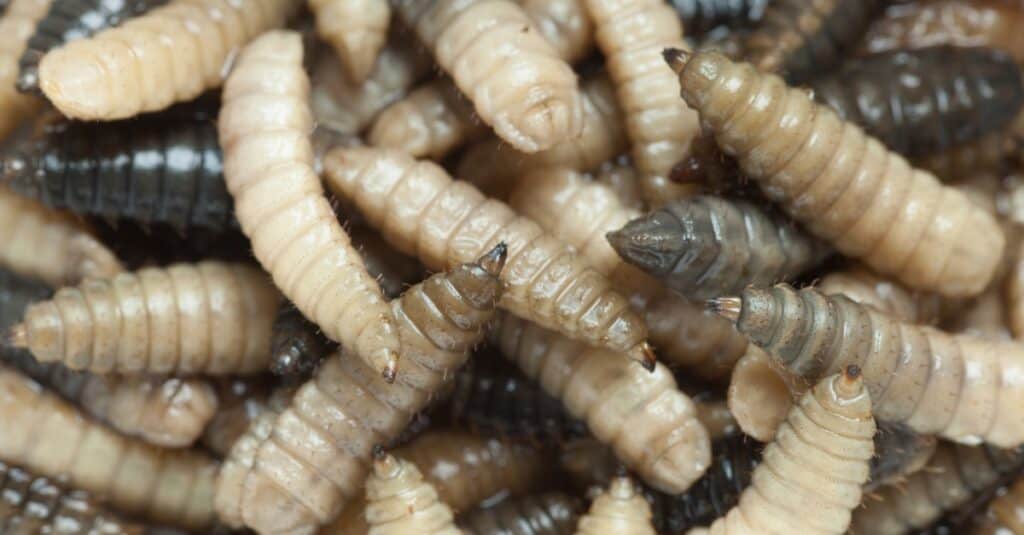
Fly larvae, called maggots, can be used under medical supervision to remove dying and infected tissue from a wound.
©iStock.com/okugawa
Why Prevent or Kill Flies?
Just because wildlife is useful in the ecosystem doesn’t mean you need a whole ecosystem in your house. Aside from their general annoyance factor, flies can be economically damaging and dangerous to health.
Flies Carry Disease
First and foremost, flies need to be eliminated from the places we live because they carry disease. After feeding on rotting plants, meat, or feces, they land on our food and skin and have the potential to transmit a lot of serious diseases. Eye infections, salmonella, E. coli, and parasitic infections like tapeworms, roundworms, or protozoa are all examples. In developing countries where large numbers of people have not been vaccinated, or in the aftermath of a mass disaster, even more serious diseases like typhoid fever, dysentery, tuberculosis, and cholera can be spread as well.
Flies Cost Us Money
Some types of flies damage crops and cut into farmers’ harvests. Others bite cattle and other livestock, irritating them and causing them to bite and scratch at themselves. This can make them vulnerable to infections and disease. In animals raised for meat, it can keep them moving around and stressed, causing them not to gain as much weight or bring as much profit when they go to market.
When food sold in grocery stores becomes contaminated with fly-borne diseases, it can lead to expensive product recalls and damage consumers’ trust in the producer and the retailer of that product. Customers avoid and give bad reviews to restaurants, parks, or entertainment venues with a noticeable fly problem. Besides being annoying, it gives an impression of a place that is unsanitary. In areas that compete for tourists, significant resources may need to be expended on finding ways to get rid of flies.
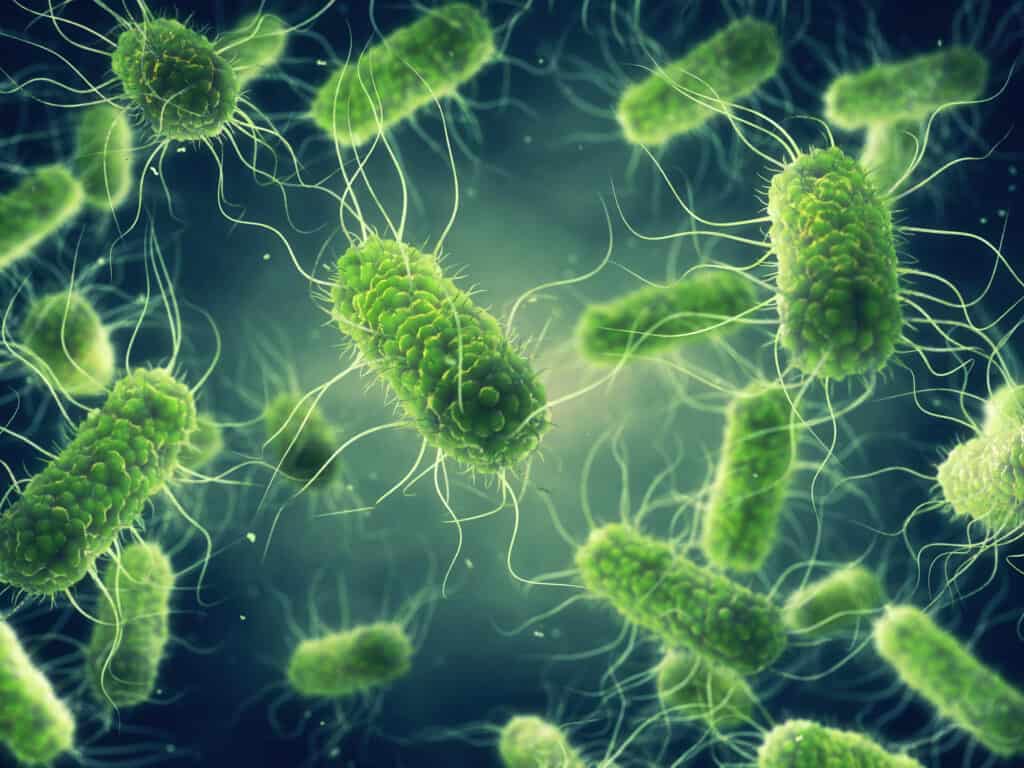
Salmonella is one of several serious pathogens that can be transmitted by flies.
©nobeastsofierce/Shutterstock.com
Methods to Keep Flies Away
There are several simple and effective ways to prevent houseflies from entering your home, or to kill them after they do.
Methods to Keep Flies Away
The main way to keep flies away is to take away their food sources:
- Keep floors, kitchen counters, tabletops, and sinks clean and dry.
- Cover food and store it in sealed containers. Do not leave overripe fruit out on the counters.
- Keep trash in closed bins and sealed garbage bags.
- Don’t leave wet dog or cat food out all day. Remove it when your animal is finished eating and offer it again later.
- Clean cat litter boxes regularly and remove any pet waste from your yard.
- Keep doors and windows closed and seal cracks. Use screens if you want to open windows.
- Essential oils like lavender, eucalyptus, and peppermint are reputed to repel flies. Use a diffuser or dilute with water and spray them around with a spray bottle.
- Spraying a mixture of Cayenne pepper and water will also repel flies.
- Remove standing water and piles of grass clippings. Keep compost well-covered with dirt.
- Keep pets clean and treat and cover any open wounds.
- Plant fly-repelling herbs and flowers such as basil, marigolds, lavender, bay leaves, or catnip.
- Turn off outdoor lights at night as these can attract flies and other insects to your house.
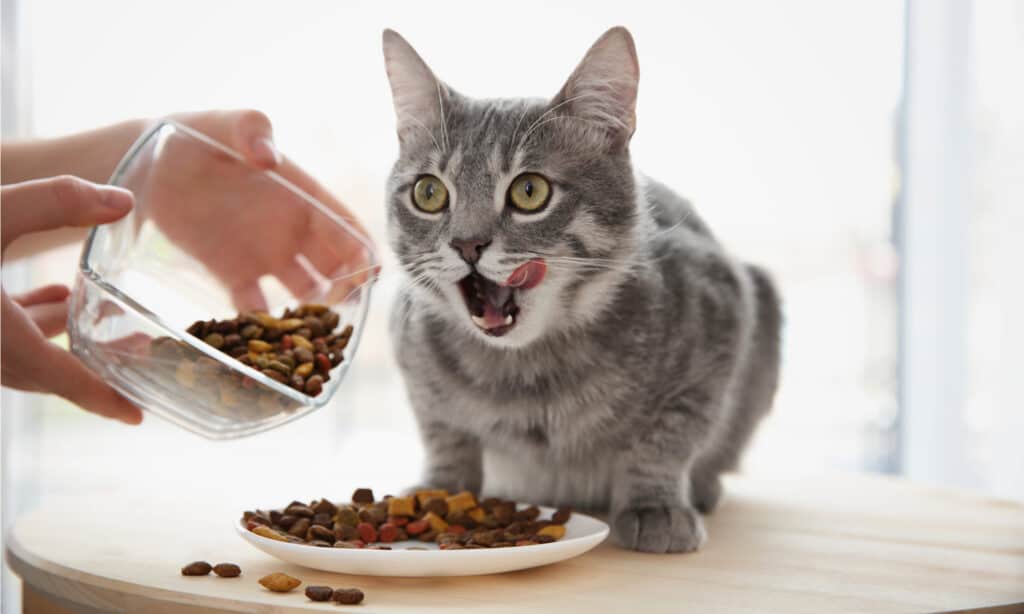
To prevent flies, don’t leave pet food out all day, regularly clean up pet waste, and keep your animal clean and any wounds covered.
©Africa Studio/Shutterstock.com
Methods to Kill Flies
It’s preferable to use natural means as much as possible to kill flies since chemical insecticides can linger in the environment and affect other species. Flies can also develop resistance to them. They should be considered a last resort for serious fly problems, but here are some other things to try first:
- Fly traps such as bait traps, electric traps, or sticky traps.
- Make your own fly trap using vinegar, sugar, wine, fruit, or meat, using a tall glass covered with plastic wrap secured with a rubber band, with fly-sized holes poked in top. Add a little dish soap to liquids to cause flies to sink in them.
- Grow Venus flytraps or other carnivorous plant species.
- Slow-moving flies on a windowsill or buzzing lazily around a light source can actually be caught fairly easily with a vacuum cleaner. Be sure to seal and discard the vacuum cleaner bag if you catch very many this way to prevent an odor of decay that could attract still more flies.
- If you decide to use an insecticide, buy one made for indoor use, follow the directions, and ventilate the area well.
With these tips you should be able to make your home less hospitable to flies, and more hospitable to you and your guests.
The photo featured at the top of this post is © iStock.com/Pattra Jayasvasti
Thank you for reading! Have some feedback for us? Contact the AZ Animals editorial team.




